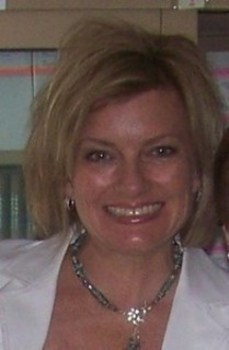Question
I am a recent graduate and I have just started my CFY in a skilled nursing facility. I have a patient with a feeding tube and I am doing recreational feedings with her. She aspirates on 1/4 tsp of honey, thick liquids, and ice chips. I have been doing the
Answer
There is not sufficient information provided by the requestor to frame a response in guiding the design and implementation of a skilled dysphagia intervention program. Medicare requires the services provided by the SLP for the resident are skilled and meet medical necessity criteria. Answers to the following questions may help determine if this is indeed a skilled intervention versus the resident simply "wanting to eat by mouth" in the absence of a change of condition that would support skilled intervention.
- What, exactly, was the recent change in condition that precipitated a physician order for a therapy evaluation? Is this change documented by nursing?
- Is the patient's expectation for functional improvement positive?
- Does the patient's condition require the skills of a therapist to safely and effectively carry out the proposed plan of care?
- Could a member of the nursing staff provide the same activity or plan of care?
- Why are the services needed now??
- What further deterioration can occur if therapy does not intervene?
- Thermal therapeutic exercises to the styloglossus and glossopalatine muscles to restore posterior lingual elevation function during mastication.
- Thermal therapeutic exercises to the posterior 1/3 of the tongue to restore pressure/ thermal/taste sensory receptors to elicit posterior lingual elevation during mastication
- Increase patient's temperature differentiation skills to increase patient's oral/ pharyngeal safety skills for inappropriate food temperatures.
Pharyngeal Exercises:
These exercises are utilized to improve both the strength and coordination of the muscles involved in swallowing:
- The effortful swallow is used to over exaggerate the typical swallowing motion. Asking the patient to utilize more effort when swallowing will engage the muscles by applying greater force. This exercise can be done with or without a bolus present.
- Tongue base retraction exercises are utilized to promote base of tongue movement. The patient should be instructed to extend his/her tongue as far out as possible and them curl the tongue as far back toward the posterior pharyngeal wall as possible.
- To increase laryngeal closure and squeeze, a high pitched "e" can be repeated as an exercise. Ten to twenty repetitions of this exercise may be done in a single session.
- A tongue hold or Masako swallow displaces the tongue base while swallowing to engage the posterior pharyngeal wall and muscles of laryngeal elevation. This may be done in multiple repetitions as a swallowing exercise, but should not be done with a bolus.
Stimulation of the anterior facial arches using a cold medium may help stimulate the onset of the swallow. A laryngeal mirror has traditionally been used to stimulate the arches ten times on each arch prior to introducing a bolus or series of boluses. The swallow reflex should be triggered when the head of the bolus reaches the anterior facial arches, so theory states that this when a bolus passes the arches, the swallow will be stimulated in a timely manner following thermal stimulation. Often lemon is added to the ice and mirror as sour boluses tend to initiate a more rapid reflexive response.
If the patient is cleared for PO food trials, the following compensatory strategies may be of benefit:
Supraglottic Swallow-
The supraglottic swallow encourages a tight breath hold during the bolus transit for added protection of the airway. The maneuver is done by having the patient hold his/her breath from the time the bolus is administered until the bolus is passed. Once the patient swallows, he/she is asked to cough to clear all material from the laryngeal vestibule following the swallow.
Super-Supraglottic Swallow-
The super-supraglottic swallow is performed in a manner similar to the supraglottic swallow. It encourages a tight breath hold during the bolus transit for added protection of the airway. The maneuver is done by having the patient hold his/her breath from the time the bolus is administered until the bolus is passed. Once the patient swallows, he/she is asked to cough to clear all material from the laryngeal vestibule following the swallow. Breath hold should be maintained and a second swallow should be done following the cough.
Mendelsohn-
The Mendelsohn maneuver may be done as an exercise as well as a compensatory strategy. The patient initiates a swallow as usual, but at the height of the swallow the patient should hold the laryngeal elevation thus encouraging the crico-pharyngeal opening to be maintained. This will allow a greater portion of the bolus to pass into the esophagus during the swallow. Control of the laryngeal elevation also promotes greater overall strength of the pharyngeal and laryngeal muscles.
Sue Curfman, MA, CCC, has been in the field of healthcare for 24 years with experience across the continuum of care including acute hospital, home health, outpatient and skilled nursing. She works as the Director of Quality Management, West Region for RehabCare Group. She holds a certificate in Case Management and Quality Management.
